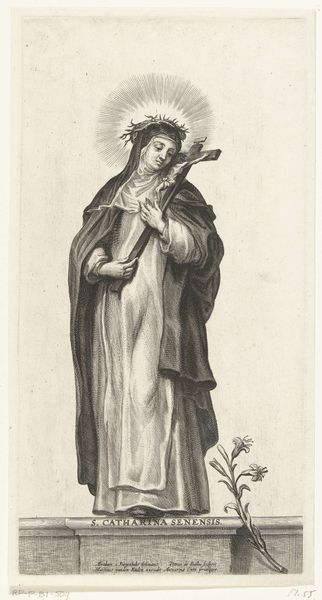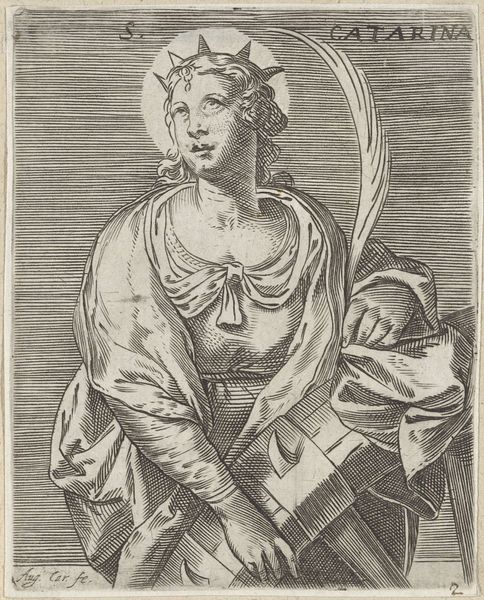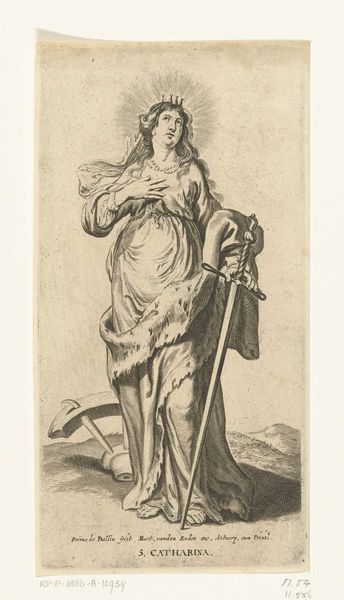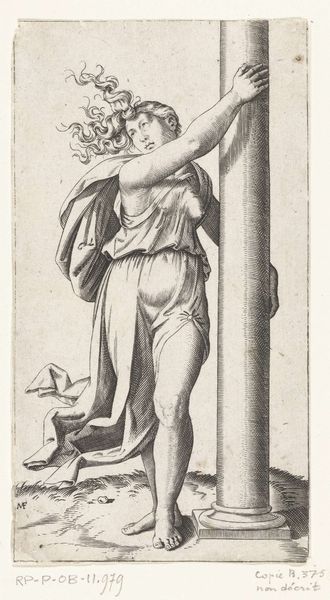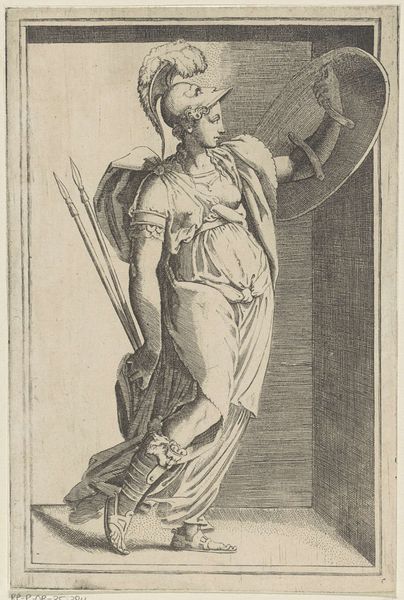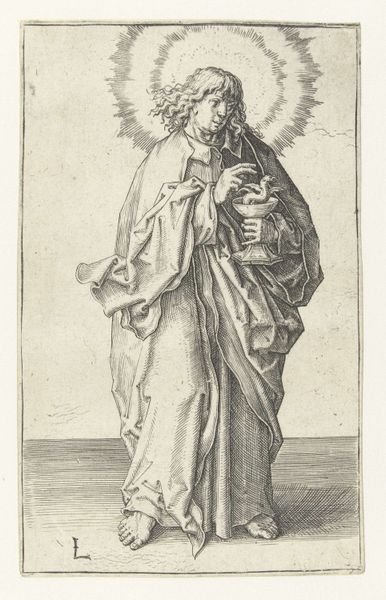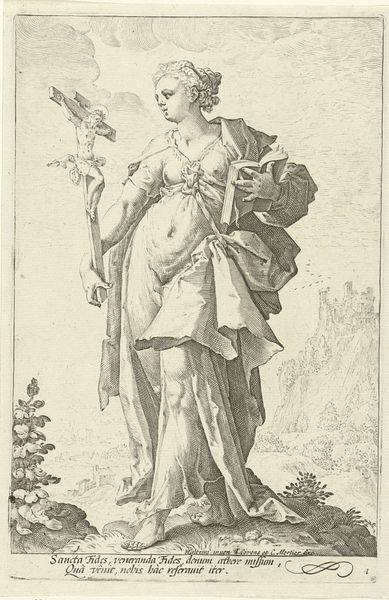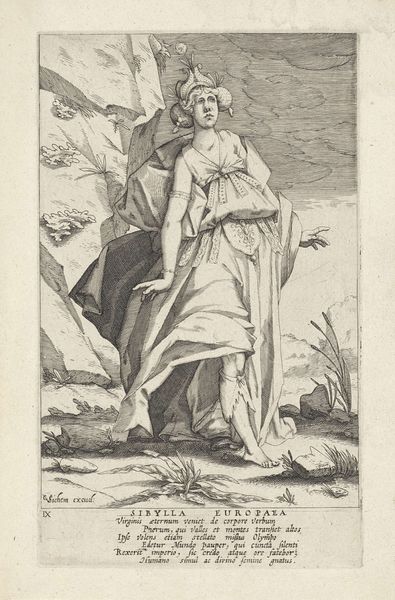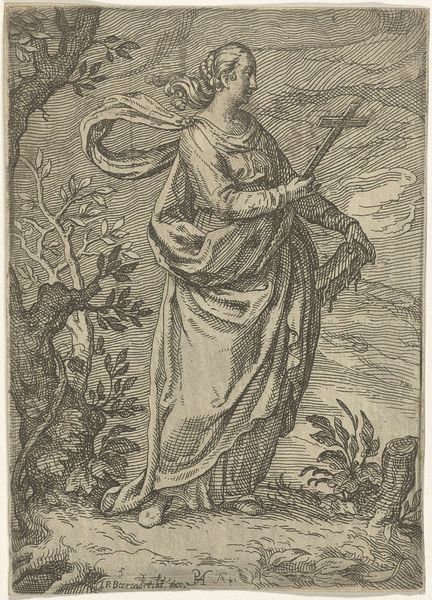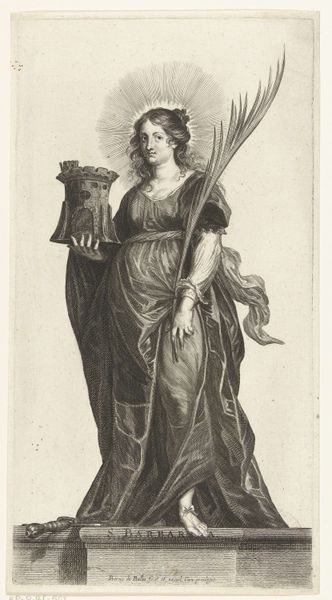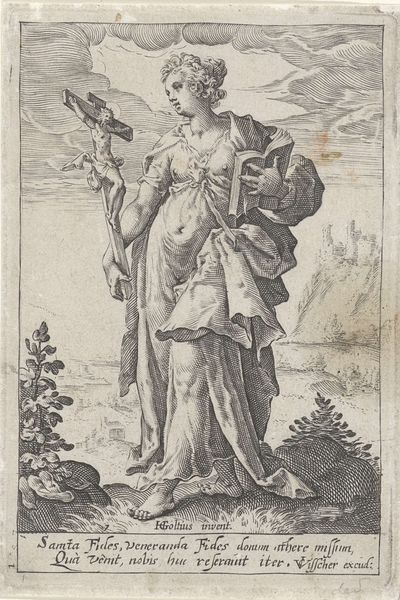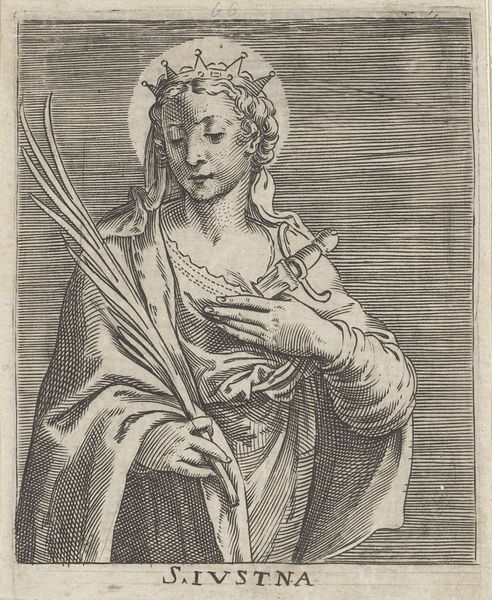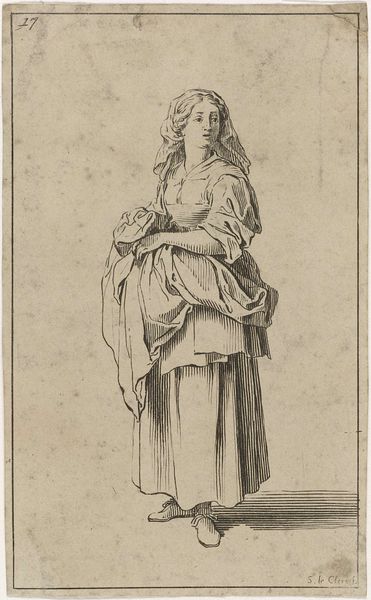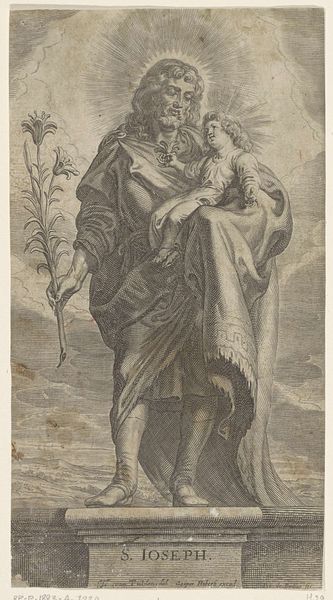
engraving
#
portrait
#
allegory
#
baroque
#
figuration
#
chiaroscuro
#
line
#
portrait drawing
#
history-painting
#
engraving
Dimensions: height 225 mm, width 116 mm
Copyright: Rijks Museum: Open Domain
This print of Saint Agatha was made by Pieter de Bailliu sometime in the 17th century. It’s rendered in the painstaking method of engraving, a process involving the careful removal of tiny slivers of metal from a copper plate. Look closely at the way this technique defines the whole image: the soft gradations of light and shadow, the flowing lines of the drapery, and the serene expression on Agatha's face. A crucial aspect of the print is the depiction of the saint's attribute: a dish bearing her severed breasts. This is a reference to the torture she endured for her Christian faith. The making of a print like this was slow, skilled work. The engraver had to translate the original design – likely a painting or drawing – into a language of pure line. Each mark was a testament to the engraver's control and precision. Although produced for the Catholic market, prints such as these were within reach of a broad audience. Understanding how this image was produced helps us to appreciate the wider world of devotion, as well as the circulation of art in the early modern period.
Comments
No comments
Be the first to comment and join the conversation on the ultimate creative platform.
